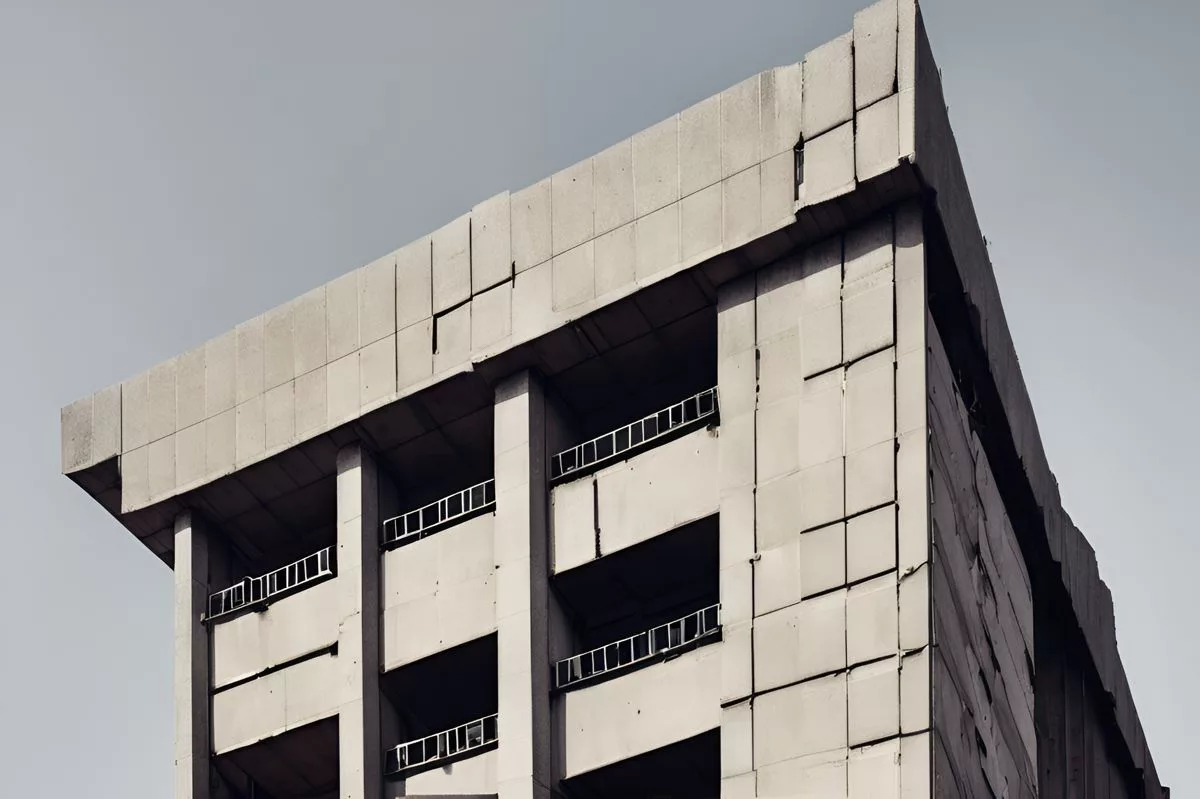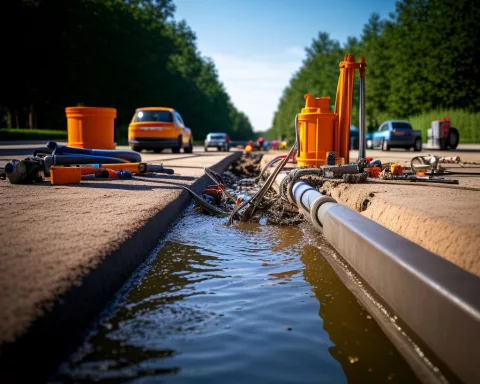Inospace is set to transform the old Telkom building in Cape Town into a lively hub for logistics and data services. This exciting change will keep the building’s unique Brutalist style while making it more useful for quick deliveries. With its prime location near the Convention Centre, the future City Exchange will help meet the growing demand for efficient delivery solutions in the urban area. This project showcases how cities can blend history with modern needs, breathing new life into old structures while preserving their stories. Cape Town is ready to embrace this fresh chapter of urban renewal!
What is Inospace’s plan for the Telkom building in Cape Town?
Inospace plans to transform the Telkom building into a vibrant logistics and data center hub. This adaptive reuse will enhance its functionality for last-mile delivery services while preserving its Brutalist architectural heritage, ultimately revitalizing Cape Town’s urban landscape.
A Landmark Moment in Cape Town’s Architecture
Inospace’s recent purchase of the iconic Telkom building at 15 Lower Long Street has marked a significant milestone in the architectural and logistical development of Cape Town. This acquisition signals a strategic growth in Inospace’s urban logistics and last-mile delivery framework, transforming a previously isolated structure into a vibrant center of activity. Constructed in the early 1970s on reclaimed Foreshore land, the building originally served as a post office and central telephone exchange for the South African Post and Telecommunications. For decades, it stood amidst parking lots and the Imperial Cold Storage facility, its Brutalist design a reminder of its era of origin.
Brutalist architecture, emerging in the mid-20th century, often sparks polarized opinions due to its bold geometric lines and abundant use of raw concrete. The Telkom building is a quintessential example of this style, representing an era that prioritized practicality and resilience over decorative elements. While many Cape Town residents have never ventured inside, the building’s exterior has ignited debates concerning architectural heritage and urban development. Reactions to Brutalist structures are mixed; some view them as unattractive, while others recognize them as integral parts of the city’s historical narrative. These discussions extend beyond Cape Town, as global conversations increasingly focus on preserving Brutalist buildings due to their cultural and historical importance.
A Vision for the Future: Transforming the Telkom Building
Rael Levitt, CEO of Inospace, envisions a future where the Telkom building’s stark exterior masks a lively and efficient interior. He recognizes this acquisition as a chance to integrate the building’s Brutalist roots with contemporary demands. Inospace aims to convert the structure into a prominent logistics and data center hub, catering to the growing needs for data management, business storage, and rapid last-mile delivery services in Cape Town. This vision reflects global trends where historically significant structures undergo adaptive reuse, skillfully balancing preservation with modern functionality.
The building’s nine stories, which include underground parking, retail spaces, and office areas on the lower levels, make it an ideal candidate for Inospace’s urban logistics model. The top floor provides premium office spaces with stunning views of Cape Town and the renowned V&A Waterfront, adding prestige to its practical applications. Additionally, the building’s significant load-bearing capacity and robust power infrastructure offer a solid foundation for its future role as a logistics powerhouse. Levitt underscores plans to enhance and repurpose the structure, highlighting that its 13,500 square meters of available space will provide competitive advantages with rental costs below those of typical industrial buildings.
Strategic Location and Logistical Potential
The soon-to-be-renamed City Exchange building boasts a prime location. Positioned across from the Cape Town International Convention Centre and surrounded by four major streets, it enjoys excellent connectivity to vital transport routes, making it perfect for last-mile delivery operations. This accessibility ensures that Inospace can effectively address the logistical demands of Cape Town’s urban environment, offering essential services in an increasingly interconnected world.
In recent years, last-mile delivery has gained traction as e-commerce and digital services continue to expand. This term refers to the final stage in the delivery process, where goods move from a distribution hub to the end consumer. As cities grow and consumer expectations for quick deliveries rise, efficient last-mile solutions become essential. Inospace’s acquisition and intended transformation of the Telkom building aim to meet this demand, placing the company at the forefront of urban logistics innovation.
Broader Implications for Urban Development
Beyond logistics, the building’s transformation symbolizes a broader shift in how cities relate to historical structures. Adaptive reuse of older buildings allows cities to preserve architectural heritage while adapting to contemporary needs. This approach not only conserves history but also promotes sustainability by reducing the necessity for new construction and minimizing environmental impact.
Inospace’s initiative reflects a global trend where developers acknowledge the value of integrating historical preservation with modern functionality. In cities like London and New York, similar projects have successfully rejuvenated formerly neglected structures, turning them into dynamic components of the urban landscape. Cape Town, with its rich architectural tapestry, stands to gain significantly from such innovative development methodologies.
Ultimately, the Telkom building’s evolution from a forgotten data center to a bustling urban logistics hub encapsulates the dynamic interplay between history and modernity. As Cape Town continues to develop, this transformation serves as a testament to the city’s capacity for renewal and its dedication to preserving its heritage while embracing the future. The City Exchange, as it will soon be known, is poised to become an integral part of Cape Town’s urban fabric, marrying the past with present needs in a celebration of innovative urban planning.
What is Inospace’s plan for the Telkom building in Cape Town?
Inospace plans to transform the Telkom building into a vibrant logistics and data center hub. This adaptive reuse will enhance its functionality for last-mile delivery services while preserving its Brutalist architectural heritage, ultimately revitalizing Cape Town’s urban landscape.
Why is the Telkom building significant in Cape Town’s architectural history?
Constructed in the early 1970s, the Telkom building is a quintessential example of Brutalist architecture, known for its bold geometric lines and use of raw concrete. It originally served as a post office and central telephone exchange, and its design represents an era that prioritized practicality and resilience. The building’s architectural significance has sparked debates about heritage and urban development among Cape Town residents.
How will the transformation of the Telkom building benefit the local economy?
The transformation of the Telkom building into the City Exchange is expected to enhance last-mile delivery services, which are increasingly important in today’s e-commerce-driven economy. By creating a hub for logistics and data services, Inospace aims to meet the growing demand for efficient delivery solutions in Cape Town, ultimately contributing to the local economy and supporting businesses that rely on timely deliveries.
What modern amenities will be included in the City Exchange?
Inospace’s vision for the City Exchange includes modern amenities such as underground parking, retail spaces, and premium office areas on the top floors. With 13,500 square meters of available space, the building will have robust power infrastructure and significant load-bearing capacity, making it ideal for data management and business storage, alongside logistics operations.
How does the City Exchange align with global urban development trends?
The City Exchange exemplifies a global trend of adaptive reuse, where historical structures are repurposed to meet contemporary needs. This approach allows cities to preserve their architectural heritage while promoting sustainability, as it reduces the need for new construction and minimizes environmental impact. Similar projects in cities like London and New York have successfully transformed neglected buildings into vibrant parts of the urban landscape.
What role does location play in the success of the City Exchange?
The City Exchange is strategically located across from the Cape Town International Convention Centre and is surrounded by major transport routes, enhancing accessibility for last-mile delivery operations. This prime location ensures that Inospace can effectively address the logistical demands of Cape Town’s urban environment, meeting the needs of consumers who increasingly expect quick deliveries in a connected world.












